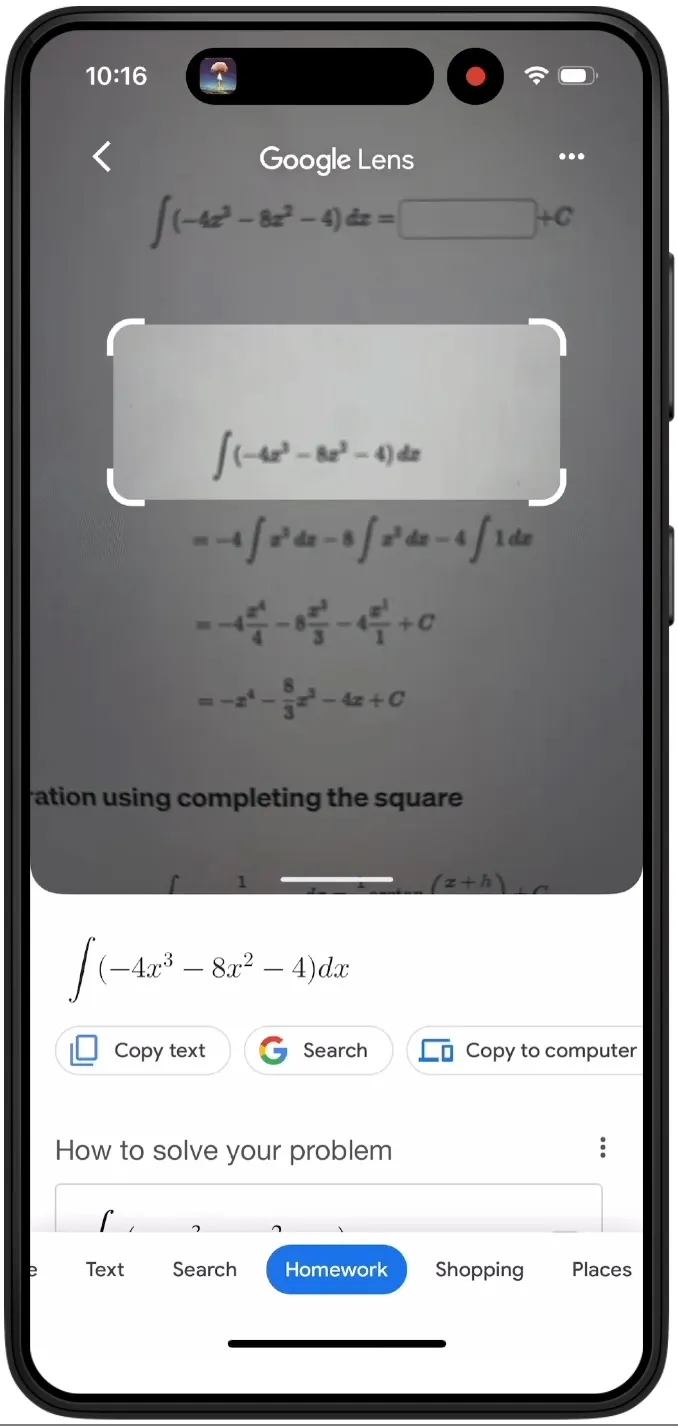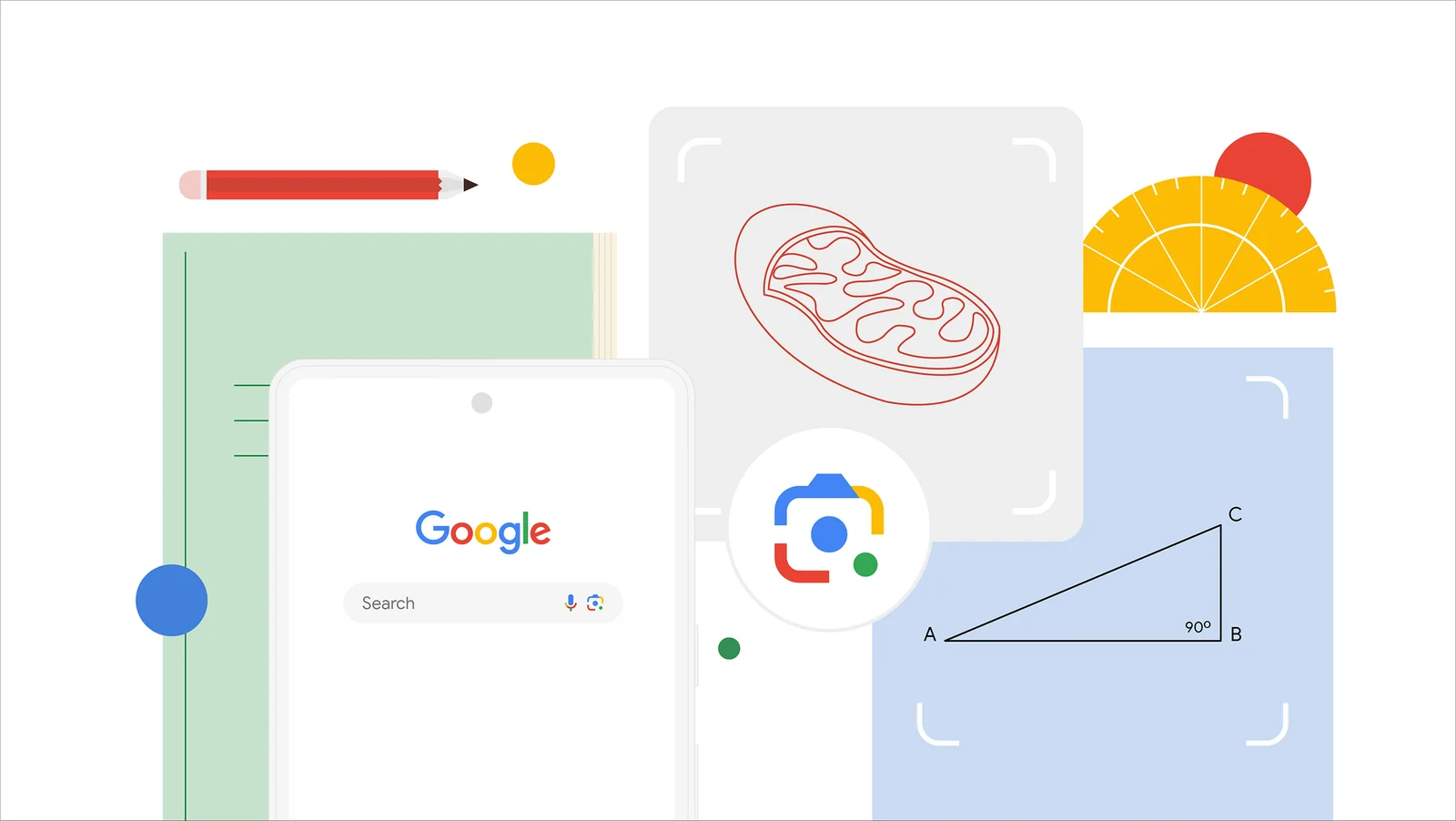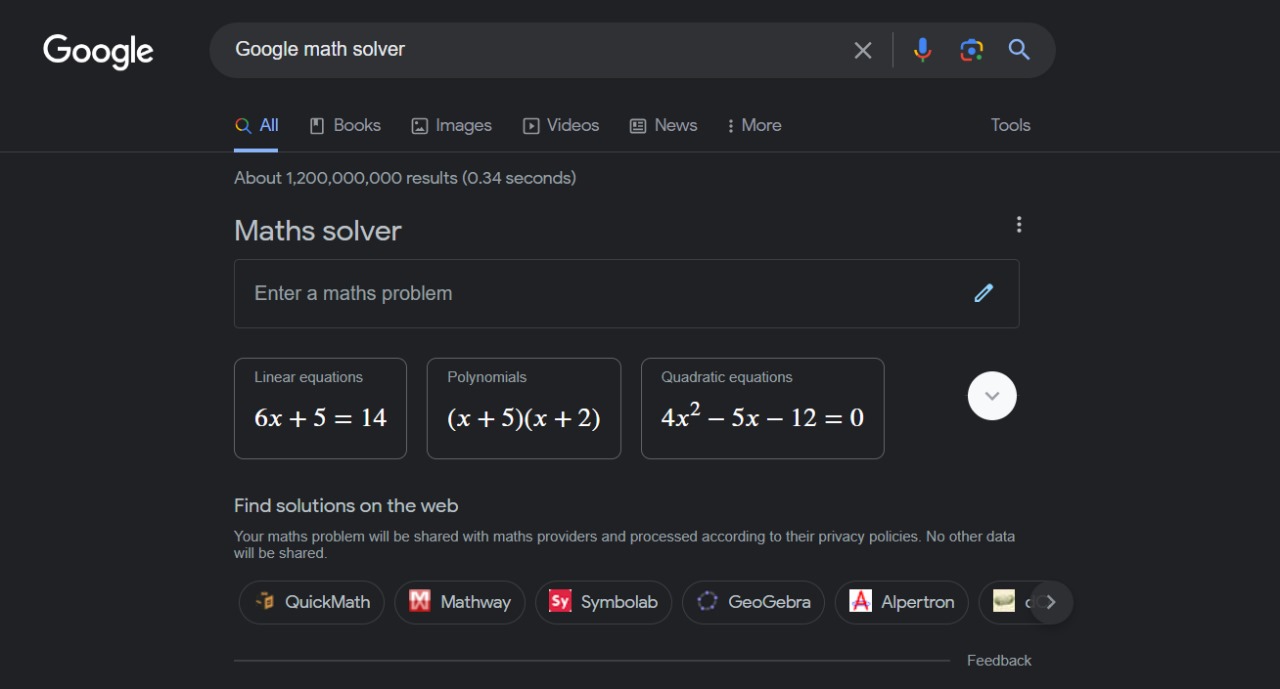Google has unveiled significant enhancements to its search engine and Lens tool
offering users powerful tools for tackling challenging math and science problems. In this update Google, users can input equations directly into the search bar or capture images with Lens to receive not just answers but also comprehensive step-by-step explanations. This feature extends beyond equations to address word problems as well. For instance, it can elucidate complex high school physics concepts, like calculating average acceleration using the equation “vf = vi + at.”
Accessing the math solver is as simple as typing “[math solver]” directly into the search bar. Initially, this feature is available on desktop, with plans to extend it to mobile devices by the end of the year.
provide explanations for both the visual and textual aspects of geometry problems. It’s worth noting that currently, Lens interprets “specific triangle problems,” as mentioned in a Google blog post attributed to Google’s product lead, Robert Wong.
Wong provided clarity on the capabilities of the geometry solver, which currently includes:
- Calculating the area of a triangle using A = 1/2 x height x base or Heron’s formula.
- Finding the perimeter of a triangle.
- Applying the “Isosceles Triangle Theorem” to determine an unknown side length or angle.
- Using the “Pythagorean Theorem” to compute the side lengths in right triangles.
Wong added, “For our geometry experience, we wanted to focus on a subset of problems that could have a significant impact before expanding to cover a wider range of geometry problems.”
To power these physics and geometry solvers

Google leverages its advanced Multitask Unified Model (MUM), capable of comprehending specific search queries across various formats, including text, images, and videos. Wong explained that these features require intricate systems to understand information across multiple formats and provide precise step-by-step responses encompassing both text and diagrams.
While the company didn’t disclose specific accuracy figures, Wong mentioned that their internal testing demonstrated a remarkably high level of accuracy.
In addition to these problem-solving features, Google has also introduced an array of 3D models on its search platform. These models enable users to engage with interactive diagrams spanning nearly 1,000 topics, encompassing biology, chemistry, physics, astronomy, and more. Google initially introduced 3D models in 2021, covering over 200 concepts in chemistry, biology, physics, and anatomy.
Over the years, Google has consistently introduced features designed to facilitate learning. This includes interactive features like “practice problems,” which assess users’ knowledge in subjects such as math, chemistry, and physics. Furthermore, Google Search recently unveiled an English tutoring tool that prompts users to vocalize their answers using provided vocabulary words.
Read more (Inovation)










